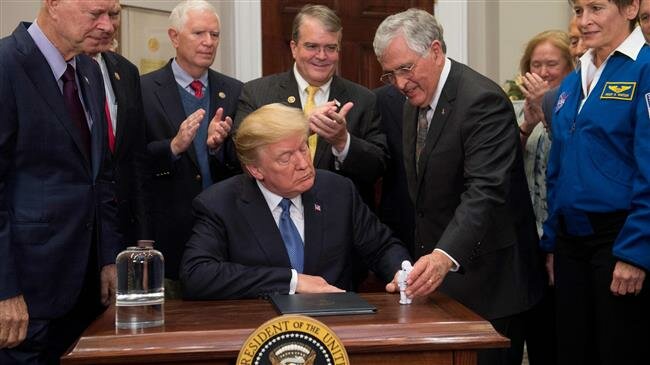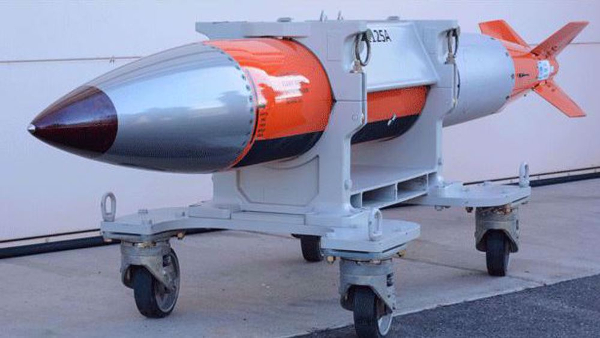US President Donald Trump’s enthusiasm for revisiting the Moon has abruptly faded as he criticizes NASA for spending money to put astronauts back on the Earth’s sole natural satellite by 2024 instead of focusing on “much bigger” initiatives like going to Mars.

“For all of the money we are spending, NASA should NOT be talking about going to the Moon - We did that 50 years ago,” Trump tweeted from Air Force One as he returned from Europe on Friday.
“They should be focused on the much bigger things we are doing, including Mars (of which the Moon is a part), Defense and Science!” he added.
Trump’s unexpected remarks took both NASA and space enthusiasts off guard as he had been the one who, back in May, significantly moved up the timeline for the manned mission to the Moon, originally set by NASA for late 2020s, to 2024.
Back then, Trump proposed giving NASA an additional $1.6 billion in 2020 to help achieve this ambitious goal, on top of the $21 billion already allocated to the space agency. Trump’s generous move came a month after his Vice President Mike Pence instructed NASA to return to the Moon by 2024.
The Moon return program is called Artemis and revolves in part around a small moon-orbiting space outpost called Gateway, which will serve as a hub for manned and unmanned missions to the lunar surface. The first landing site is said to be near the Moonís South Pole, where water ice seems to be almost abundant on the floors of permanently shadowed craters.

An artistís illustration of NASAís Orion spacecraft (L) approaching the Gateway in lunar orbit (by NASA)
The Artemis is itself part of a broader space initiative, known as the Space Policy Directive 1 (SPD-1), signed by the American president on December 11, 2017. The SPD-1 clearly mandated that NASA, through an integrated program with private sector partners, send astronauts back to the moon before attempting a trip to Mars and beyond.
“This time we will not only plant our flag and leave our footprint—we will establish a foundation for an eventual mission to Mars and perhaps someday to many worlds beyond,” Trump said during the elaborated signing ceremony at the time.
It is not yet quite clear whether Trump, through his Friday tweet, wants to discard the idea of sending astronauts to the Moon, which would be a substantial shift in thinking at the White House about NASAís goals and direction.
In the second half of Trump’s tweet, the Moon is apparently regarded as part of Mars (which is clearly not). The statement might shock many space enthusiasts, but he was probably attempting to describe NASA’s proposal to use the moon as a pit stop on the way to Mars.
“As @POTUS said, @NASA is using the Moon to send humans to Mars!,” said the space agency’s administrator Jim Bridenstine, who tweeted on Friday, saying the Trump was only reaffirming NASA’s space plan. However, he did not elaborate more.
On July 20, 1969, the NASA’s Apollo 11 became the first manned-spaceflight ever landed humans on the Moon. Some six hours later, on July 21, the American astronaut Neil Armstrong stepped on the lunar surface from the Apollo Lunar Module (LM) and uttered, “Thatís one small step for a man, one giant leap for mankind,” what would become one of the historyís most celebrated one-liners.
Armstrong, plus two other astronauts, had been sent to space by a Saturn V rocket from Kennedy Space Center in Merritt Island, Florida, on July 16.
Their successful mission was followed by five similar ones, all carried out by NASA, between 1969 and 1972, with Apollo 17 became the last of the series amid the heyday of the space race between the US and Russia.
Russians won the first stages of the space exploration when they sent Sputnik, the first artificial Earth satellite, into an elliptical low Earth orbit on October 4, 1957, another landmark achievement, but lost the game when their biggest rival, the US, launched the first manned mission to the Moon.
LINK: https://www.ansarpress.com/english/11500
TAGS:































 online news tv
online news tv




